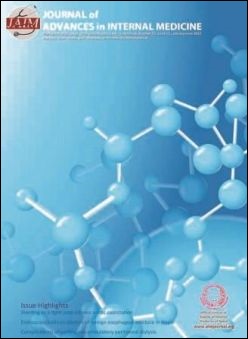Transcatheter closure of Patent ductus arteriosus at Shahid Gangalal National Heart Centre, Kathmandu, Nepal
DOI:
https://doi.org/10.3126/jaim.v6i1.18310Keywords:
Amplatzer duct occlude, patent ductus arteriosus, transcatheter closureAbstract
Background and Aims: In the current era, transcatheter closure of patent ductus arteriosus (PDA) using either coils or device is a well-established procedure. The aim of this study was to assess safety of transcatheter closure of PDA at Shahid Gangalal national heart Centre, Kathmandu, Nepal.
Methods: It was a single centre, retrospective study conducted between March 2007 to March 2017. Cardiac catheterization laboratory records of all consecutive patients who underwent PDA device closure were included. A lateral view Aortic angiogram was performed to determine the morphology and size of the duct. Device type and size was selected as per the aortogram. A second aortic angiogram was performed 5 min after device deployment to determine the success of the closure. Echocardiography was done next day of the procedure to assess success of the closure.
Result: During the study period 126 patients were attempted for transcatheter closure of PDA. Six patient were thought to have unfavorable size or shape, and transcatheter occlusion was not attempted. In one patients attempt was made to close the duct with cook coil which embolized to pulmonary artery. One hundred and nineteen patient PDA was successfully closed. Among the 119 patients 89 were female and 30 were male. The PDA was closed by Amplatzer duct occluder in 99 patients, Life tech PDA occluder in 14 patients, Hyperion PDA occluder in two patients, Post-infarct Muscular VSD Occluder in four patients.
Conclusions: Transcatheter closure of PDA can be done safely with high success rate.
Downloads
Downloads
Published
How to Cite
Issue
Section
License
This license enables reusers to distribute, remix, adapt, and build upon the material in any medium or format, so long as attribution is given to the creator.




